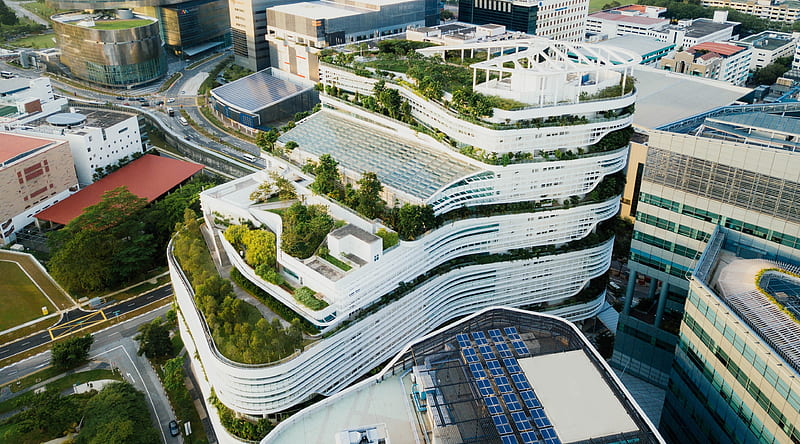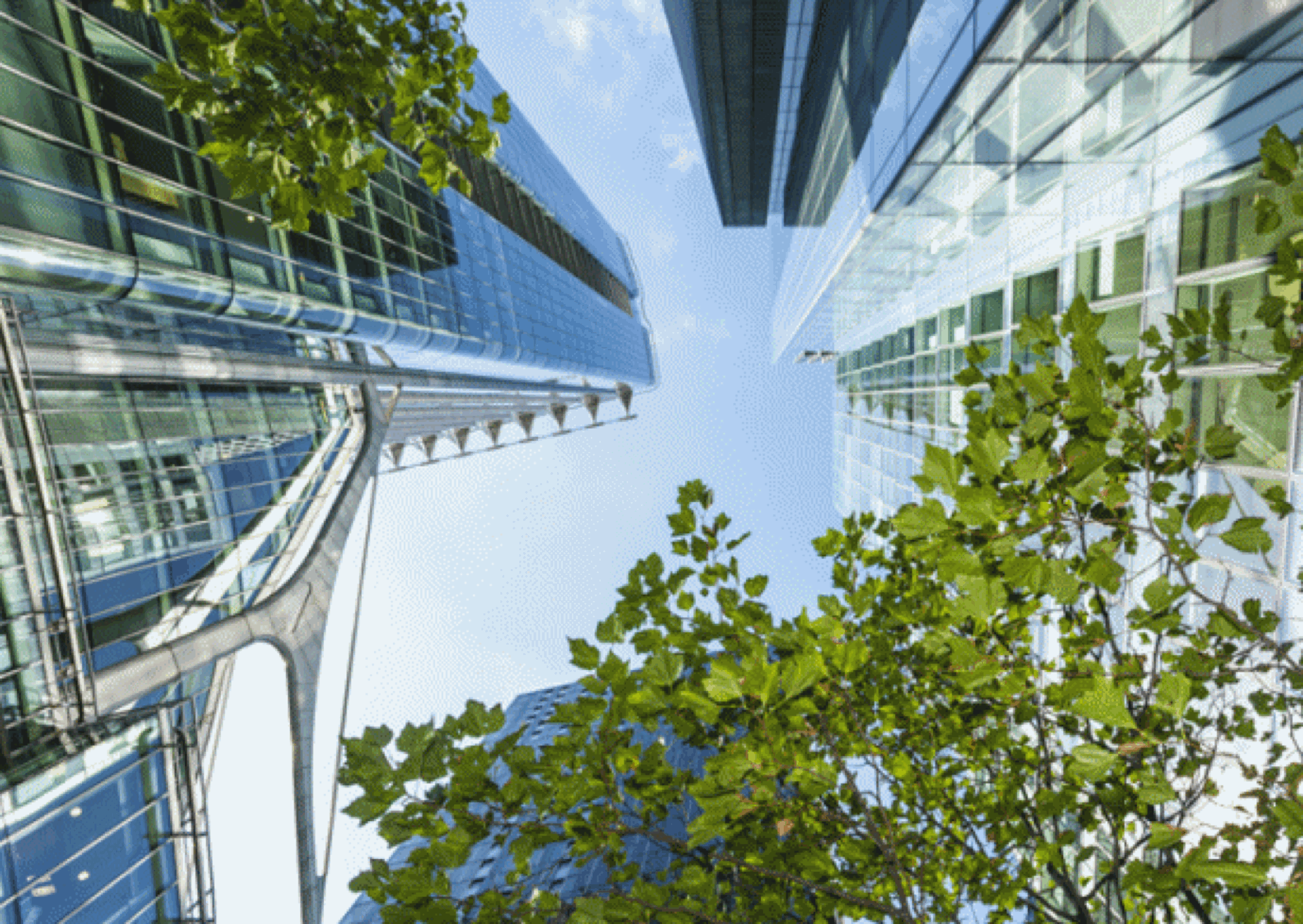Green buildings are not just a concept that can save the world but also make our world healthier, richer, and safer. It’s time to research more and the sooner we realize the benefits, the more the chances of survival for us as a species. Consider Green Buildings from the context of conventional goals of Affordable Housing: Affordability: While there has been no systematic study to the costs associated with green building construction,
one of the recent reports by Newecology states that “development costs of green buildings ranged between 18% below to 9% above the costs of conventional affordable housing projects”.
Further, we should also be including the added value of health and comfort for residents. A healthier living environment also cuts back your medical expenses apart from the fact that you feel good! Performance: Green technologies and architecture improve the durability of the building to a great extent and minimize the costs of refurbishments, repairs, or regular maintenance.

Better insulation, the right amount of ventilation, and a stronger building envelope also offer a better performing asset while adding to the resale value. Health: The construction of green buildings is carefully designed around the heath of the residents and the environment around them. Reduced emissions, better indoor air quality, reduced need for artificial insulation (HVAC), and a cleaner environment are the perfect mix we should be living with.
Green building does not necessarily have to be more expensive than traditional construction. In the case of more extensive green projects, such as fitting an array of solar panels, there is likely to be a significant increase in costs but decreased energy costs and benefits to the environment lead to an impressive return on investment over time.
Less comprehensive green building projects, such as the reuse of existing buildings or materials, should not involve additional costs and can still provide significant environmental benefits. This is why any level of green building should represent the future of construction.

Green Products
There are more green products available today than even a few years ago. Facility executives can specify everything from carpets with backings that don’t contain PVC to paints that are low in volatile organic compounds to energy-efficient elevators.
The benefits of green buildings
The world over, evidence is growing that green buildings bring multiple benefits.
They provide some of the most effective means to achieving a range of global goals, such as addressing climate change, creating sustainable and thriving communities, and driving economic growth.
Highlighting these benefits, and facilitating a growing evidence base for proving them, is at the heart of what we do as an organization.
The benefits of green buildings can be grouped into three categories: environmental, economic, and social. Here, we provide a range of facts and statistics from various third-party sources that present these benefits.
Environmental
One of the most important types of benefits green buildings offer is to our climate and the natural environment. Green buildings can not only reduce or eliminate negative impacts on the environment, by using less water, energy or natural resources, but they can – in many cases – have a positive impact on the environment (at the building or city scales) by generating their own energy or increasing biodiversity.
Economic
Green buildings offer a number of economic or financial benefits, which are relevant to a range of different people or groups of people. These include cost savings on utility bills for tenants or households (through energy and water efficiency); lower construction costs and higher property value for building developers; increased occupancy rates or operating costs for building owners; and job creation.
Social
Green building benefits go beyond economics and the environment and have been shown to bring positive social impacts too. Many of these benefits are around the health and wellbeing of people who work in green offices or live in green homes. Green buildings can be built in a cost-competitive way or they can be built at a premium. It depends on what strategies are selected, and what standard it is being compared to.
Design Costs: If the standard buildings around the area are being built without any particular designer input, then the cost of the design for a green building will be seen as an additional cost. Green building design includes the work of architects, mechanical, electrical, and structural engineers, and specialized green building consultants.
Construction Costs: If the normal buildings are being built with concrete, brick, glass, and steel, and a green building decides to use local materials like mud or sun-dried bricks, there may actually be some savings compared to standard buildings. The cost will also depend on the availability and cost of skilled labour for these alternative building methods. Such strategies using local materials or passive design strategies such as good building orientation, shading etc typically do not add much cost if any. But if a building is trying to be green using high-end technology such as automated controls and sensors, then yes, it would be more expensive and significantly more complex.
Timing: A lot of strategies to go green cost-effectively can only be used in the planning starts from the concept stage. For example, it is greener to use fewer windows, but that decision has to be made very early in the design stage. Almost always, the green strategies that are tacked on at the end cost more. In a country like the US, where most buildings use a design team anyway, the additional cost for a LEED Gold building can be as low as around 2% if the design team makes it part of the plan from the very start.
Lifecycle cost: the total cost incurred in a building is the sum of the cost of land, construction, and maintenance up to demolition, usually considered 30–60 years. Green buildings come into their own when lifecycle costs of the building are factored in, which incidentally, are fantastically lower than a non-green building. The monthly electrical and water cost of a reasonably green building would be anything between 18–35% lower for a LEED gold and perhaps up to 45% lower for a LEED Platinum project. All these numbers, of course, depend on what systems are energy-saving, and how much energy is saved. In conclusion, I would say yes, green buildings are more expensive to build but less expensive to run. A balance is what makes one successful.
The green building Concept is gaining importance in various countries, these are buildings the ensure that waste is minimized at every stage during the construction and operation of the building resulting in low cost according to the experts in the technology.
Different levels of green building
Let’s start by saying that not every green building project has to be large scale. Of course, there are many projects of that type and some of them can be expensive. For instance, installing an array of solar panels necessitates a large initial investment.
However, there are green building projects which are smaller but can still make a difference. For instance, a current building can be repurposed or recycled materials can be used. In these cases, the costs involved should not be any higher than for traditional construction. In fact, reusing materials can actually help to reduce costs.
It’s also important to note that although creating a building that uses sustainable energy can involve a significant initial outlay, money can actually be saved in the long term. This is because green buildings are more cost-effective to heat and cool.
- High-performing buildings can be sold at a premium, with the average green building worth 7 percent more than its traditional counterpart.
- Green buildings, on average, are 14 percent less costly to operate than traditional buildings, with most new builds today achieving significantly more energy savings than that.
- Market demand for green building is doubling every three years.

Green Buildings Boost Property Value Of Properties
Indeed, the study finds that, on average, certified buildings have a higher occupancy rate than non-certified buildings: + 4% for LEED-certified buildings, or + 9.5% for office buildings. Energy-Star certified buildings are also better rented than those with no certification (+ 3.7% on the rental price for LEED-certified buildings). This means certified buildings are easier to rent – they stay less idle, which reduces costs for real estate operators and owners.
And they can also be rented for a more expensive price whose value is offset by lower energy, water, and heating consumption for tenants. But that’s not all: the study remarks an increase in the property value of certified green buildings: if it goes to resale, it’s worth 8 to 10% more compared to the original property value. In this way, investing in a green building is a profitable initiative for house owners in the short and long term – whether the prospect is renting or selling.
Green buildings are one of the key strategies to reduce environmental pollution and create a healthier environment inside and outside of buildings and, generally, the materials used are harmless. Green buildings provide optimal utilization of valuable energy sources such as wind, water, sun and etc.
Green building is a response to a demand for energy and resource efficiency. Nowadays the green building is much more than energy efficient. Now designers understand that fresh air, improved indoor environment, and water savings are also important. Buildings are now examined in different aspects like local, natural and their neighbours as well.
At first when environmental expert people and the government was trying to convince people that green building is good and beneficial for the environment, then people’s interest level is quite low, then expect people start talking about its other beneficial side like it’s good for residents also now they are also disclosing that it’s profitable as well. One green building can help to improve the environment, health, and bank balance as well. Green buildings environmental benefit is well recognized.
The Green building program has matured with time and now discuss return on investment, risk mitigation, employee productivity and heal as well. Green building projects shift their emphasis over time from ‘planet’ to ‘people and ‘profit.’

